Finding the right set of irons is hard. We get that. Even when you’re shopping within one family (for the sake of this guide, let’s say it’s the Titleist T-Series), identifying the perfect model can be a challenge.
So, today, we’re going to do our best to help you find the right Titleist iron. While we hope this guide is helpful, it comes with the disclaimer that your best chance of getting your irons absolutely dialed, and ultimately getting the most for your money (none of this stuff is cheap), comes by way of a fitting – either with Titleist directly or a reputable fitter.
Full disclosure: While we don’t personally think your handicap always provides the best indicator of what iron you should play, we’ve provided some general ranges to help inform your decision.
The real question isn’t what your handicap says about you. It’s about finding the right balance between flight and forgiveness for your individual swing.
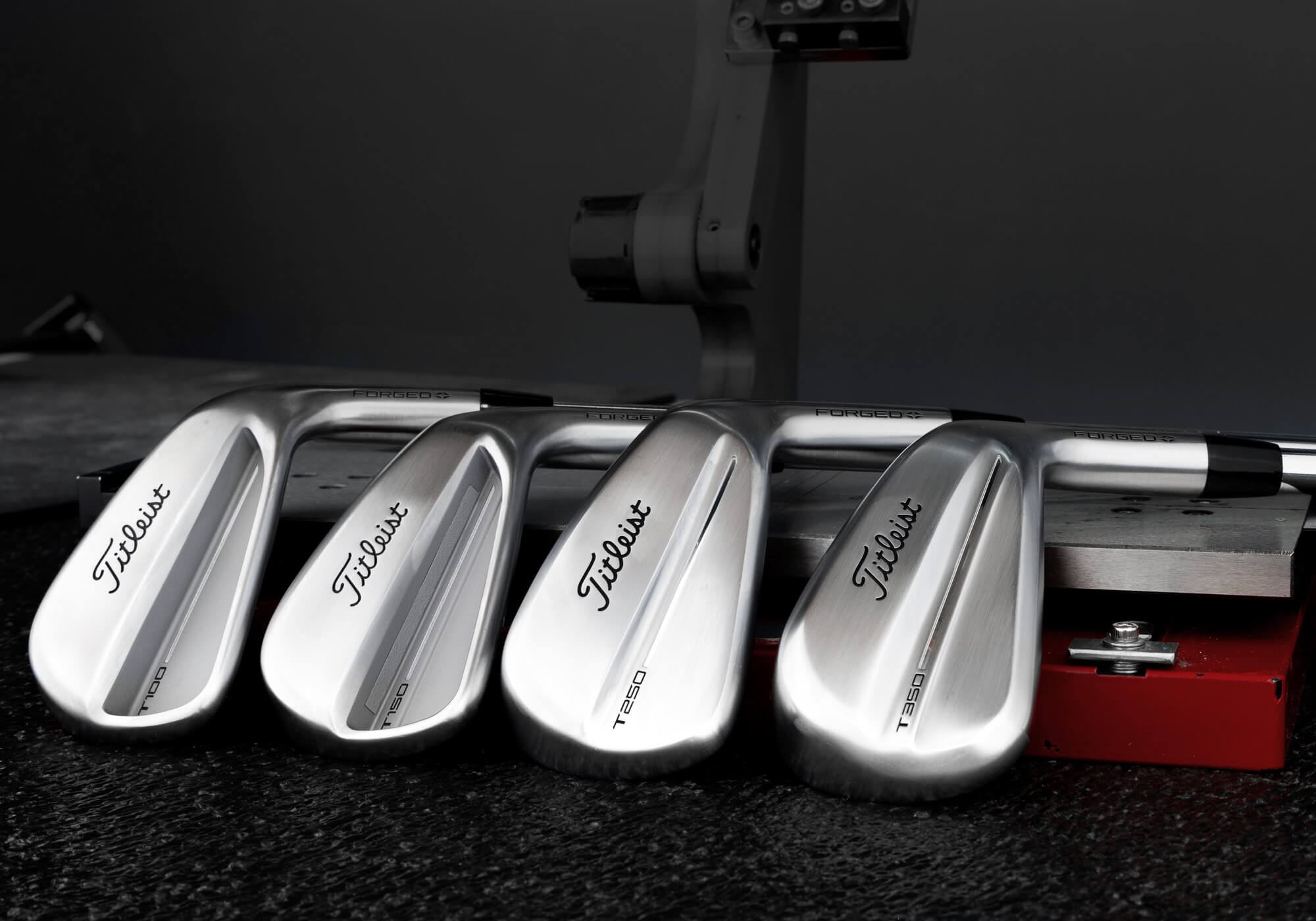
Who is T-Series for?
Before we break down individual models, let’s tackle some persistent thinking: Titleist only makes irons for better golfers.
FALSE (black bear).
There was arguably a time when that was true but it hasn’t been that way for a while. Titleist’s target audience isn’t better golfers—it’s dedicated golfers of all ability levels. The T-Series services everyone from tour-level players (T100) to 20-something handicappers looking for maximum forgiveness (T350).
If you care about your game, want to improve, shoot lower scores, and have a better overall experience on the golf course, Titleist makes an iron for you.

Titleist’s design and fitting philosophy
Titleist’s approach to iron design and the final product is rooted in the idea of the 3Ds, which the company sees as integral to optimizing iron performance:
Distance Control: Building consistent carry distances with proper five-mph ball speed gaps between clubs. This isn’t about chasing your longest 7-iron; it’s about creating a set that performs predictably from your strongest-lofted iron to your pitching wedge.
Descent Angle: Getting the ball to come down steeply enough to actually stop on greens. If your 7-iron isn’t hitting at least a 45-degree descent angle, you’re not stopping shots—you’re just hitting the ball farther. Here’s the kicker: descent angle often correlates with ball speed. When golfers struggle to maintain those crucial five-mph gaps between clubs, descent angles often suffer right along with the speed dips.
Dispersion: Tightening your shot pattern both left-to-right and front-to-back. Golf is a game of misses and the right iron will keep your best shots close to the target while minimizing the damage when you don’t catch it perfectly.
With that foundation laid, let’s take a closer look at the individual models in the Titleist T-Series family.
T100: What the pros play

Where it fits: The T100 has been the most-played iron on the PGA Tour for the last several seasons and there’s no reason to expect that’s going to change. It is the quintessential better player’s iron.
The construction: The T100 is a dual-cavity forged design that features tungsten weighting in the heel and toe. The face is CNC milled for consistency, while the new Vokey-inspired Progressive Groove Design (common to all T-Series irons) helps maintain spin from all lies and conditions. Long irons now feature the muscle channel once exclusive to the T150.
The plot twist: For 2025, Titleist made the T100 one degree stronger across the set. Before you scream about “loft-jacking,” there’s method to this madness. LPGA players who liked the compact design often bent T100s strong, while PGA Tour players often preferred a bit more bounce. The updated specs work for both groups without compromising performance for anyone.
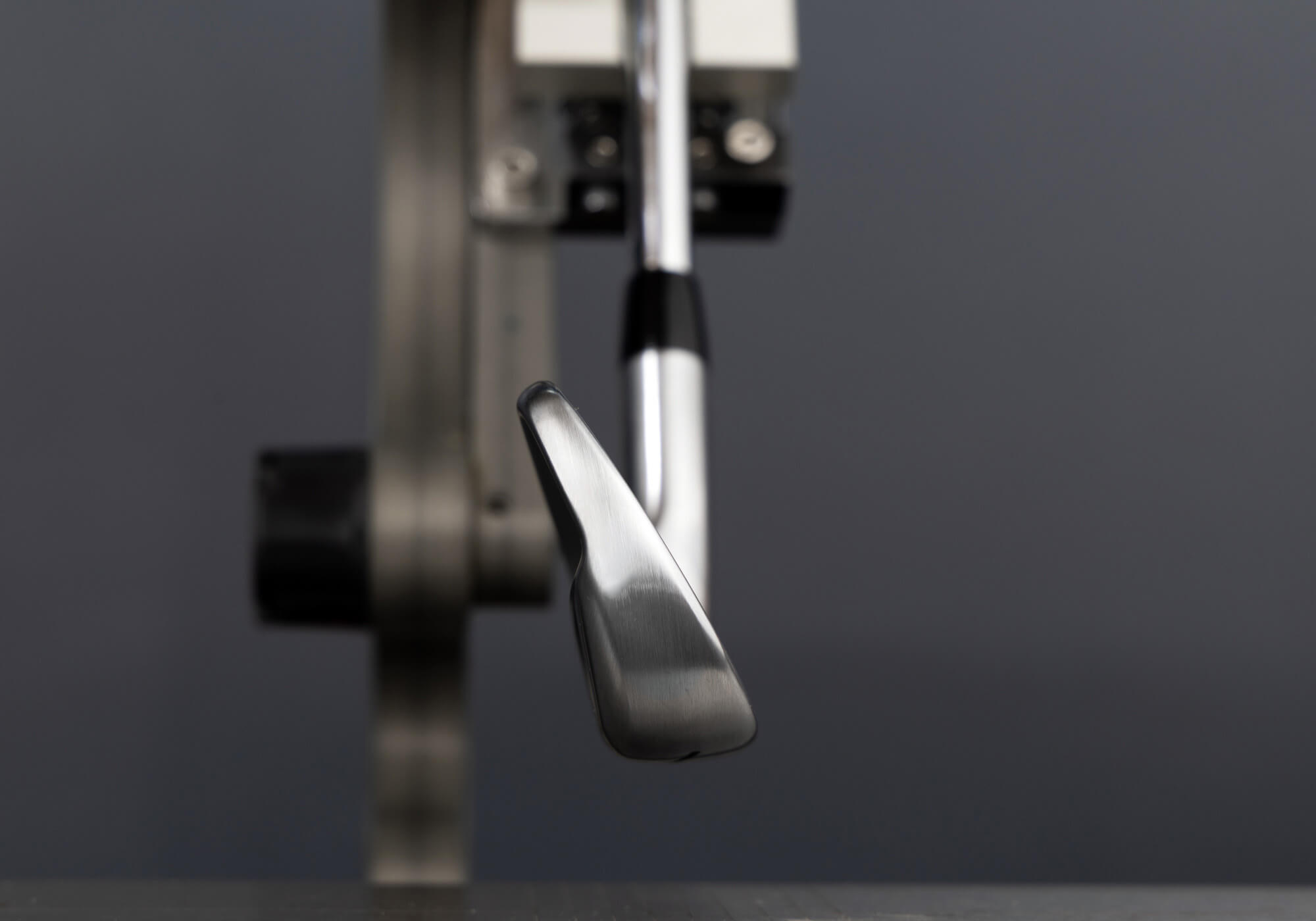
- You want to play what the pros play (this is far from the best reason to play an iron but we get it).
- You’re a competent ball-striker who doesn’t need help getting the ball airborne, can control spin and doesn’t need an abundance of forgiveness.
- Your eyes are drawn to compact shapes and you prefer it when technology is subtle, if not invisible (but it’s there, we promise).
- You prioritize precision, control or feel above all else.
Put a number on It: T100 is suitable for golfers at the “tour” level up to mid (maybe even high) single-digit golfers.
T150: The player’s iron with a turbo button
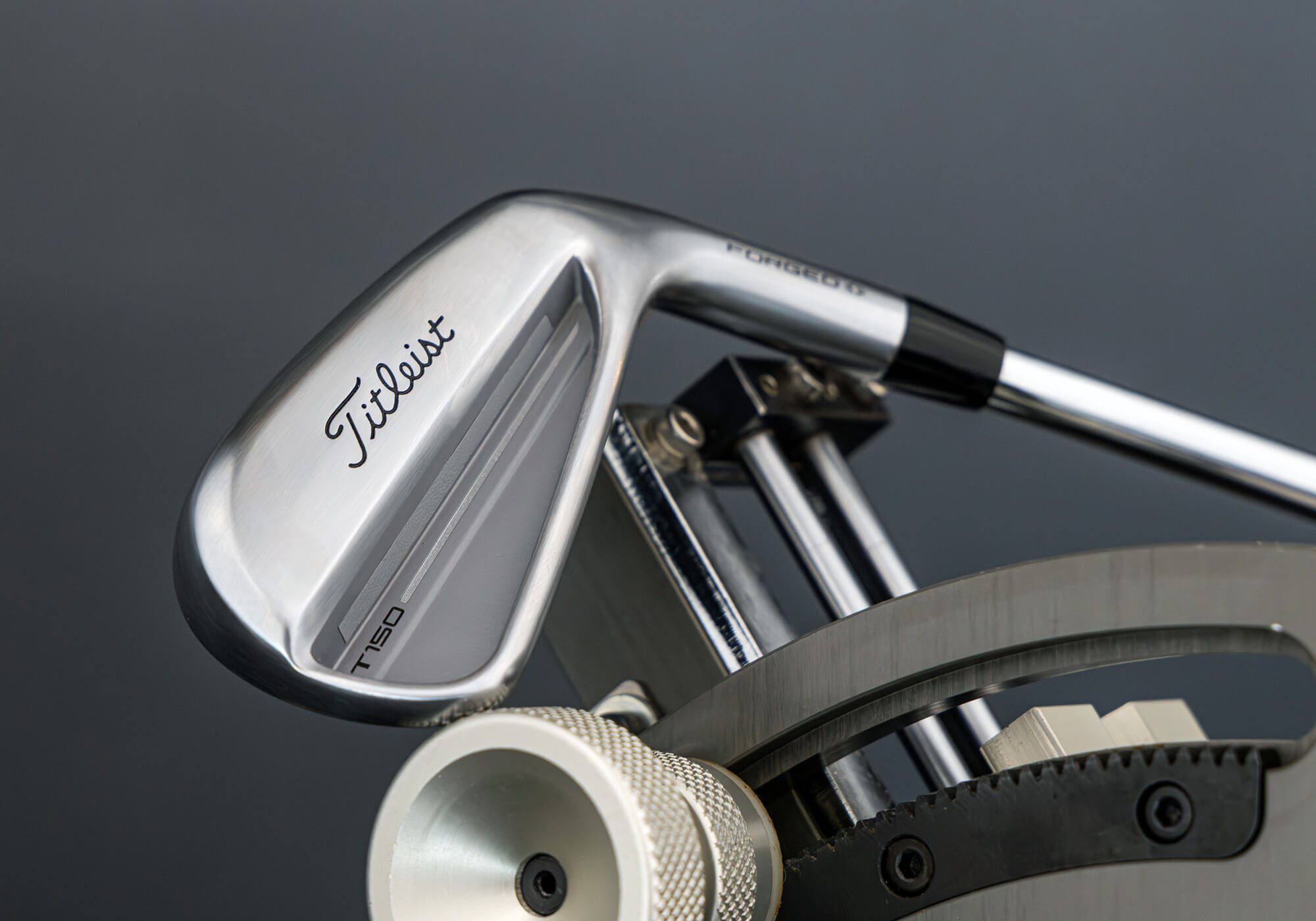
Where it fits: Think of the T150 as the T100’s faster sibling. It maintains the player’s iron aesthetic (it’s only slightly larger than the T100) and feel but adds a little bit of speed and forgiveness.
The construction: The T150 features a muscle channel in the 3- through 7-irons that increases ball speed without sacrificing feel. Variable-face thickness manages performance across the hitting area and progressive blade lengths make blending with other T-Series models seamless.
The plot twist: Despite being only one degree stronger than the T100, the T150 generates significantly more ball speed through the set, thanks to its muscle-channel design. It’s going to be measurably faster than the T100 for most golfers. That’s real distance without sacrificing the player-preferred aesthetic.
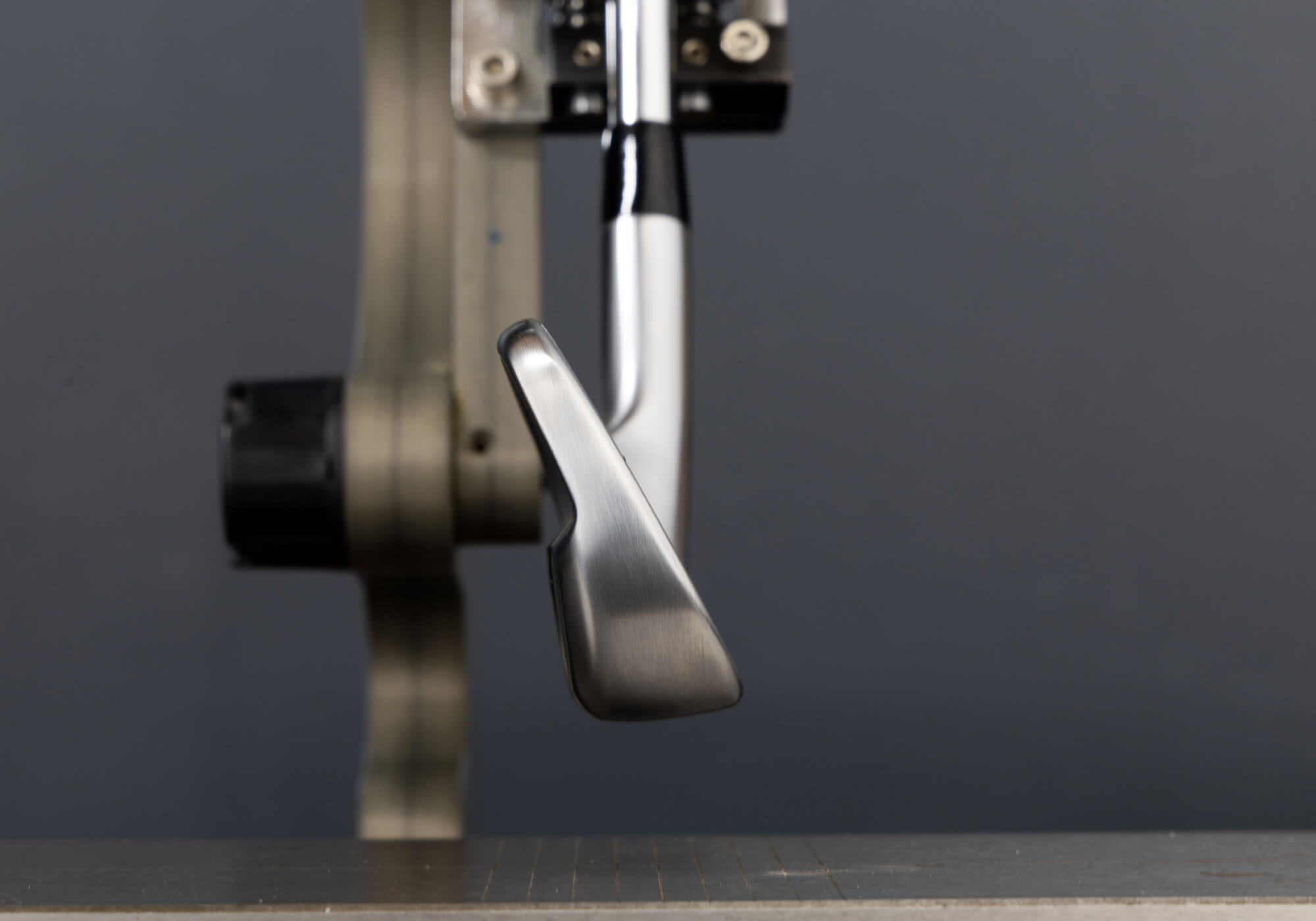
- You want to play what the pros play but need a little bit more speed and/or a touch more forgiveness.
- You still prefer a compact shape and don’t need much help getting the ball airborne.
- You appreciate tour-level performance but need a little bit of a safety net.
- You want tour-level aesthetics with a performance safety net.
Put a number on It: The T150 is ideally suited to golfers with 2 to 12 handicaps, though we’d be remiss not to point out that it’s been a popular choice on the LPGA Tour and for some long irons on the PGA Tour.
T250: The player’s distance iron we’ve been waiting for
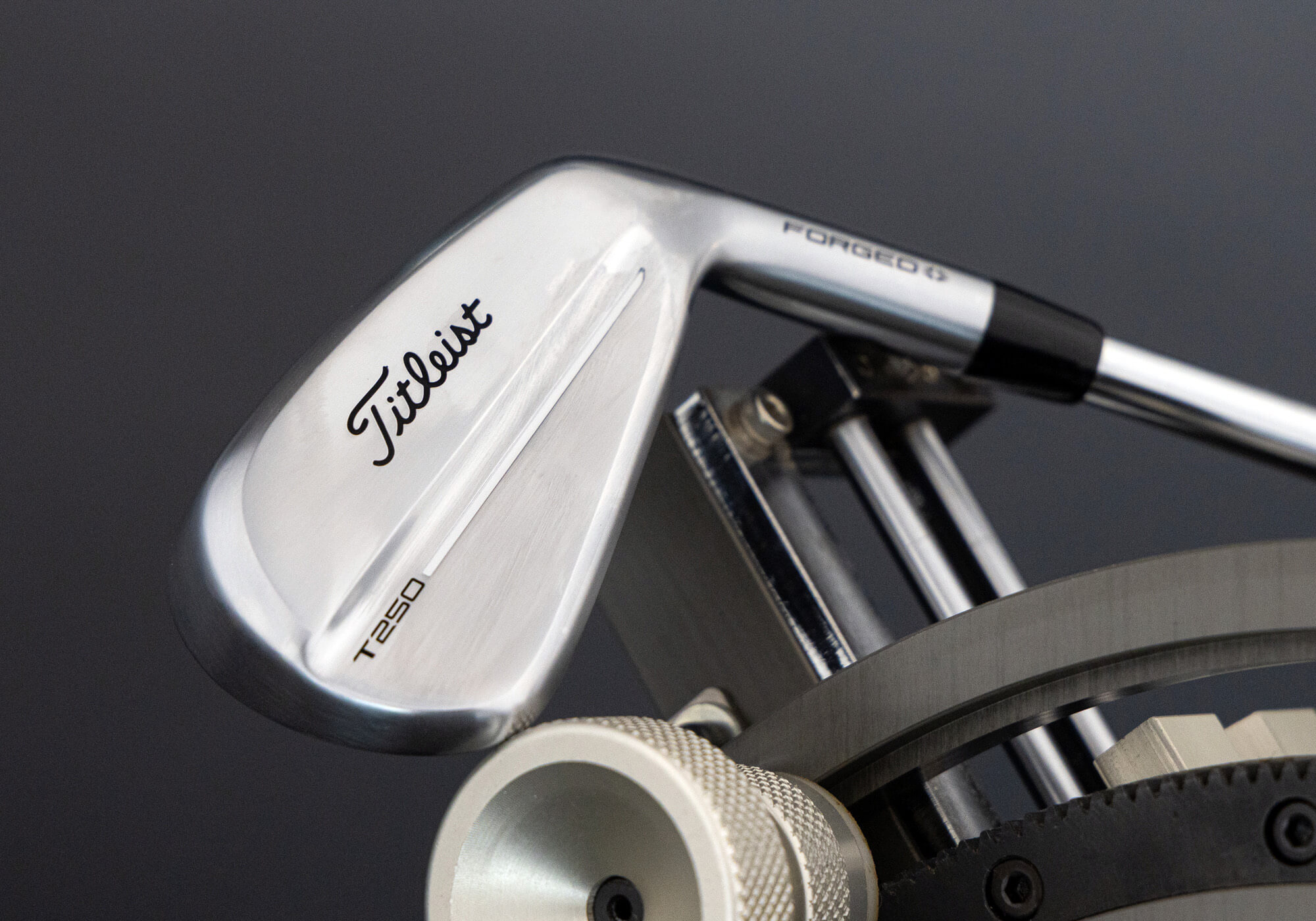
Where it fits: This is Titleist’s direct answer to the TaylorMade P790—a ground-up redesign built to deliver true player’s distance performance with the clean looks golfers shopping the category have come to expect.
The construction: All-steel construction with no plastic badging (finally!), a forged L-Face, and Max Impact for consistently fast ball speed across the face. Split tungsten weighting optimizes launch and stability.
The plot twist: Titleist finally ditched the plastic badge on the back—something many felt made previous iterations feel cheap. The all-steel construction not only looks cleaner but also creates a more pleasing feel at impact. T250 is the iron that proves Titleist can compete head-to-head with TaylorMade’s P790 without compromising their design philosophy, even if the T-MB was arguably the original player’s distance iron.
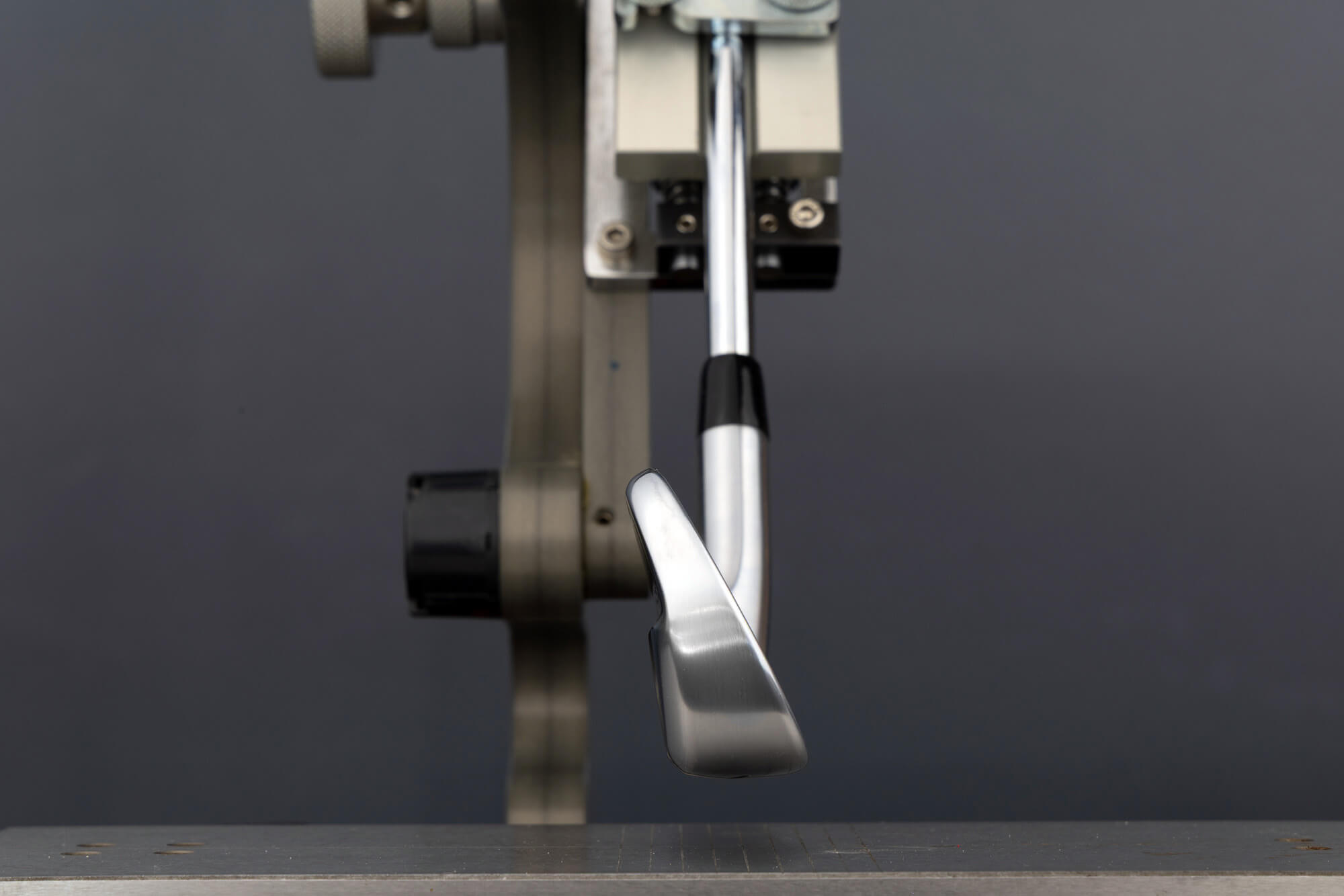
- You’ve been waiting for Titleist to make a real player’s distance club since the T-MB left the shelves.
- You want more distance without losing playability.
- You need some help with height and need forgiveness but aren’t willing to join “big iron nation.”
- You want the performance benefits of modern technology wrapped in clean, tour-inspired lines.
Put a number on It: 5 to 18 handicaps—the Goldilocks iron that’s “just right” for a huge range of golfers. And, frankly, if you’re compelled to argue the range is even wider, I won’t fight you.
T250 launch spec: Straight to the moon

Where it fits: Something completely new in the category—signature player’s distance looks tuned for golfers who need significantly more loft to get optimal ball flight.
The construction: At its core, Launch Spec offers the same construction and technology as the T250, but with a staggering 4.5-degree weaker lofts (the 7-iron is 35 degrees versus 30.5 in the standard T250), lighter heads and lighter shafts.
The plot twist: A player’s distance design that opens the category to golfers who need more launch, giving them access to modern iron technology without forcing them into a larger, more offset design. The sensible lofts mean the T250 Launch Spec may not be the longest iron on the market but it’s going to deliver the 3Ds in a way most irons for moderate swing speed players simply don’t.
- You don’t swing as fast as you used to (few of us do, but …).
- You’re a chronic low-ball hitter in need of more height.
- You want the ball to fly like it did when you were younger (or faster) and love the T250 (or even T350) concept but don’t have the speed to fully activate the center of gravity benefits.
- You’re a golfer who refuses to compromise on looks just because you need more loft.
Put a number on It: 5 to 25 handicap—age, swing speed and flight windows matter more than any other factor here.
T350: Maximum forgiveness, minimum compromise
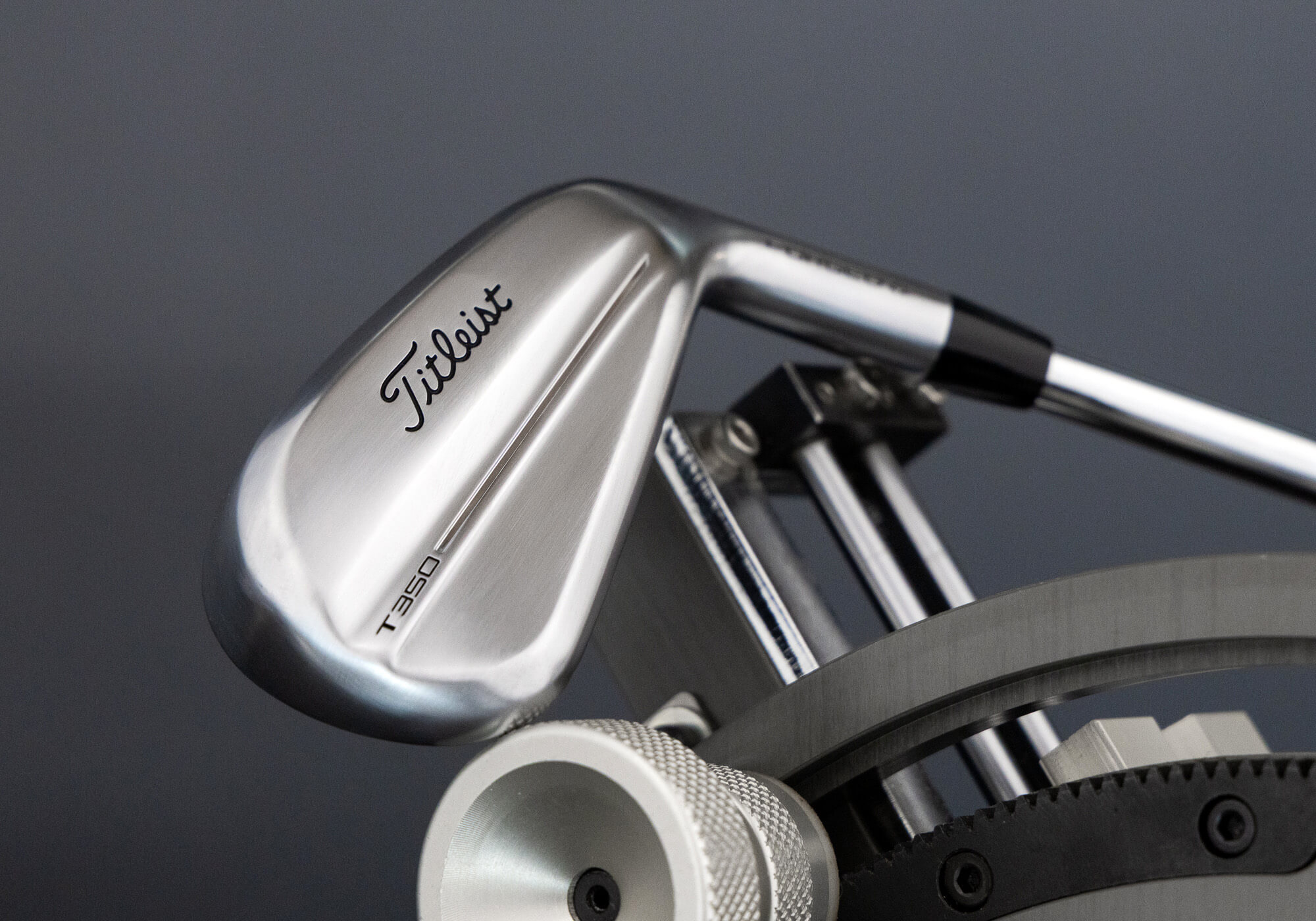
Where it fits: Titleist’s most forgiving iron. Billed as the best-kept secret in golf, the T350 is designed for golfers who need some extra help but still want to feel like they’re playing serious equipment. If nothing else, the T350 is the iron that shatters any notion that Titleist makes gear exclusively for better players.
The construction: Large, plastic-free hollow-body design with Max Impact Technology for consistent ball speed across the hitting area and extensive tungsten weighting for high launch and stability.
The plot twist: Despite being the most forgiving in the lineup, the T350 still looks remarkably clean at address. Titleist managed to pack game-improvement performance into a shape that won’t embarrass you. Despite the stronger, jacked lofts, many golfers will find the T350 to be the one that flies the highest and delivers optimal descent angles.
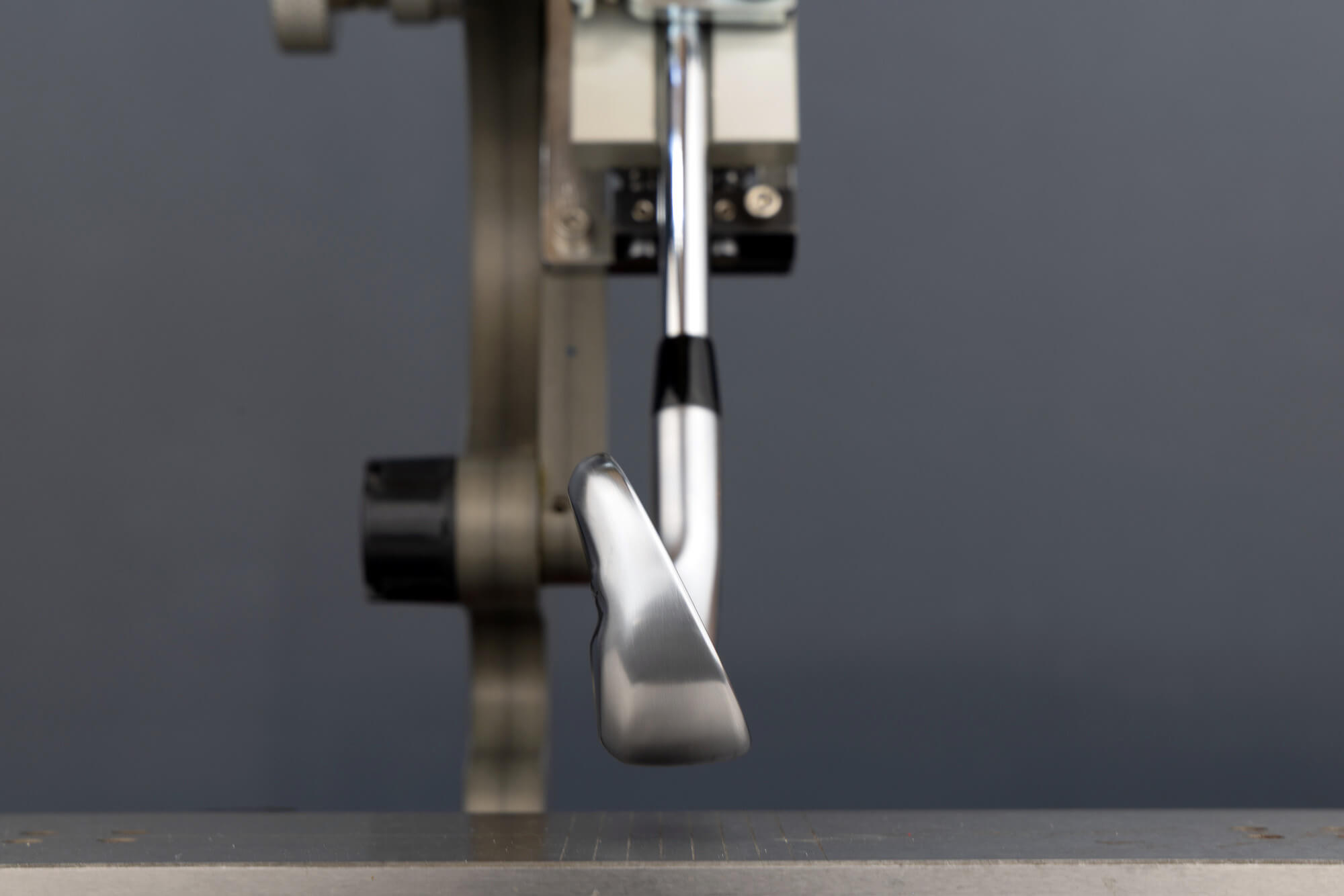
- You need height and have enough swing speed to let the center of gravity do its thing.
- You don’t mind—hell, you might even embrace—joining “big iron nation,” especially when your membership card comes with clean lines like the T350.
- You want to maximize both distance and forgiveness.
- You’re a golfer who appreciates plenty of extra help without looking like they’re playing beginner equipment.
Put a Number on It: 10 to 25+ handicap—though don’t be surprised if some single-digit players sneak these into their long iron spots.

The art of the blended set
Here’s where things get really interesting. When it comes to T-Series irons, don’t feel like you need to commit to a single model. More than 80 percent of Titleist tour players use blended sets, mixing multiple T-Series models to optimize performance throughout the bag.
The progressive approach: Start with faster, higher-launching, more forgiving models in the long or utility irons where help is often most needed, then transition to more compact, precision-oriented models in the scoring irons where you want control.
Popular Combinations:
The beauty of the new T-Series is that all five models share a clean aesthetic, making blended sets look intentional rather than cobbled together from spare parts.
Forget the stereotypes. Trust the process
The right T-Series iron for you isn’t determined by your handicap—it’s determined by what your swing needs and, to an extent, what your eye can accept.
Maybe you’re a 15-handicap who strikes the ball beautifully but needs a touch more forgiveness in the long irons.
Maybe you’re a 5-handicap who’s getting older and needs more help getting the ball airborne.
Maybe you’re a 20-handicap who’s tired of chunky game-improvement irons and wants to play something that looks like serious equipment.
The point? Titleist has built a lineup that gives every dedicated golfer options. The key is getting properly fitted to find the combination that optimizes your personal version of the 3Ds.
Stock shafts and pricing

Each T-Series iron comes with carefully selected stock shaft options designed to complement the head’s performance characteristics:
- T100: True Temper AMT Tour White (steel) or Mitsubishi Tensei White AM2 (graphite)
- T150: True Temper AMT Tour Silver (steel) or Mitsubishi Tensei White AM2 (graphite)
- T250: True Temper AMT Tour Black (steel) or Mitsubishi MMT AMC Blue 85g (graphite)
- T250 Launch Spec: Nippon NS 750GH Neo (steel) or Mitsubishi MMT AMC Red (graphite).
- T350: True Temper AMT Tour Red (steel) or Mitsubishi MMT AMC Red (graphite).
Of course, anything in Titleist’s extensive shaft catalog is available as an option during fitting. From premium graphite offerings by Mitsubishi and Graphite Design to various steel options from True Temper, your fitter can dial in the perfect shaft to complement your swing and optimize the 3Ds.
Pricing: T-Series irons are priced at $1,499 per seven-piece set (steel) and $1,599 per seven-piece set (graphite), with various custom fitting options available.
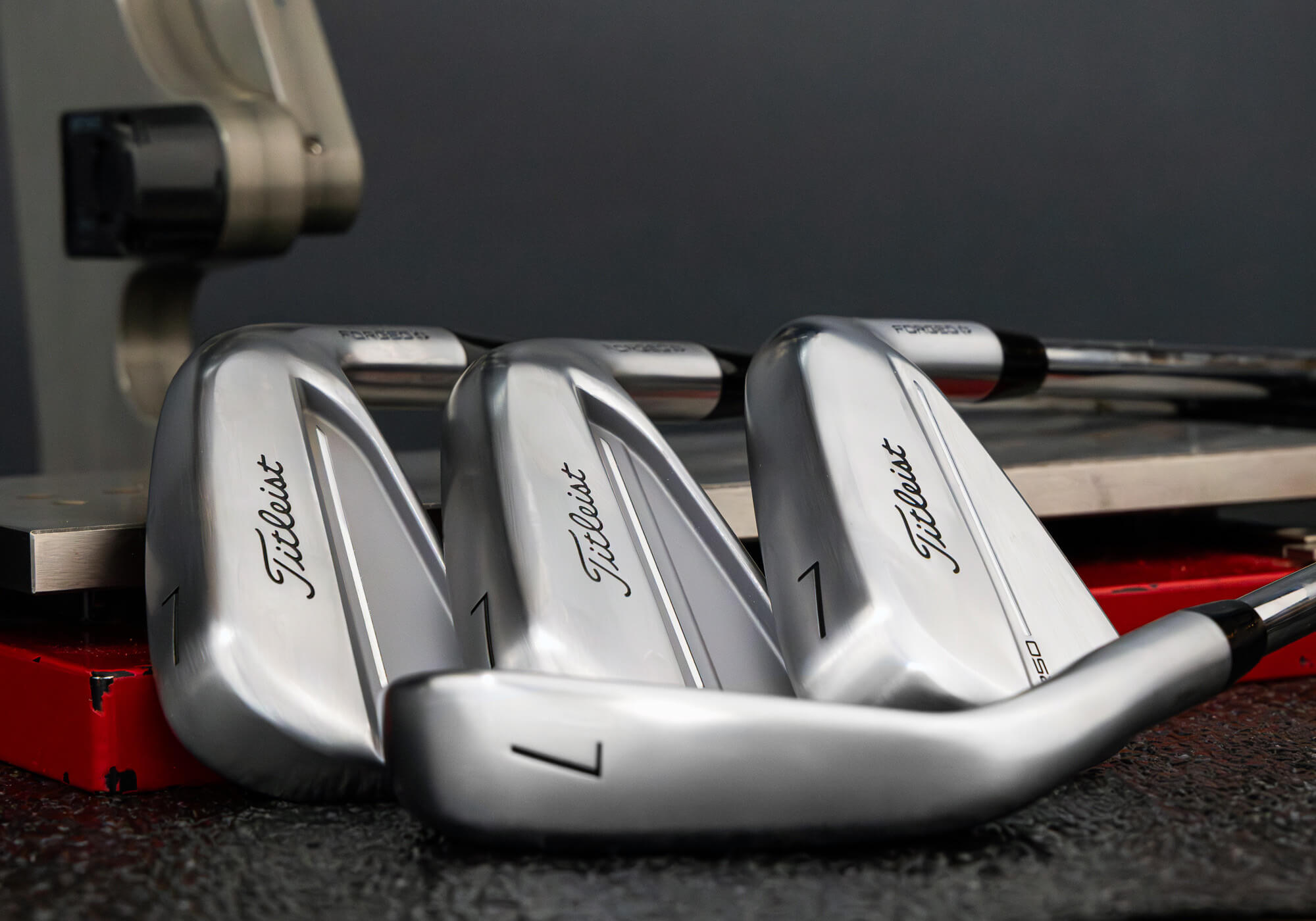
The bottom line
The best iron is the one that helps you play better golf, regardless of what anyone else thinks you should be playing. Whether that’s a full set of T100s or a blend that spans the entire lineup, the answer lies in proper fitting, not handicap assumptions.
Ready to find your perfect T-Series combination? Get fitted by someone who understands the 3D philosophy and can help you navigate the full lineup. It’s worth the investment.
The post Which Titleist T-Series Iron Is Right For You? appeared first on MyGolfSpy.


